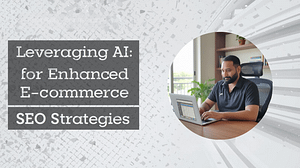2025 e-commerce is more customer-centric, smarter, and quicker than before. As increasingly high demand drives the need for high-speed and personalized shopping, Shopify sellers are breaking beyond vanilla templates—and reaching for the next generation of headless commerce.

If scaling, enhancing performance, or providing seamless omnichannel experiences are on your agenda, headless could be your next giant leap. Everything you need to know to leverage ecommerce technology in creating headless Shopify stores that succeed in 2025 and beyond is here.
Table of Contents
What is headless commerce, exactly?
In simple terms, headless commerce keeps the front of your e-commerce store isolated from the back (orders, data, and processes). Rather than Shopify’s native theme system, you can leverage Next.js or Gatsby to create lightning-fast bespoke stores.
You still retain access to Shopify’s robust backend, which provides you with more features and control, resulting in a superior experience for your customers.
The outcome? Complete liberty in art, quicker loading, improved mobile device support, and the opportunity to expand in various areas and platforms.
Headless commerce is a new approach to doing things where the front end of your online store that your customers can see and interact with is independent of the back-end that manages inventory, payments, and orders.
This allows developers to build and design the customer experience on their own terms, on whatever device or platform they choose, while still depending on a solid back-end system to run smoothly.
A beauty firm could utilize headless commerce to create a bespoke skincare quiz on their website while adopting the same checkout experience for desktop and mobile. A sports store could place a smart mirror in their store that directly integrates with their online shopping experience. With headless commerce, there are virtually no boundaries to imagination.
Key Takeaways
Headless commerce separates frontend and backend, allowing flexible, custom shopping experiences across any device or platform.
Headless Commerce Market Outlook
| Metric | Value/Insight |
| Global Headless Commerce Market (2025) | $1.74B, projected to $7.16B by 2032 (CAGR 22.4%) |
| Shopify’s Share in US Ecommerce (2025) | 10%+ of all US ecommerce sales |
| Headless Adoption Rate (Retailers) | 61% have implemented or plan to implement |
| GCC E-commerce Market (2027) | $49.78B, 11% annual growth |
| India E-commerce CAGR (2024–2028) | 18.7%, with Tier II/III cities driving growth |
How is headless commerce different from legacy e-commerce?
Traditional ecommerce platforms are like buying a TV and a sound system as a package—you get it all in one, but if you want to replace speakers, you may affect the TV. Headless commerce lets you select the best tool for the task and connect them through APIs.
For example, with traditional ecommerce websites, modifying the appearance of your site might also mean modifying the backend, which is slower to deploy. With headless ecommerce, your front-end can be modified by your design team without touching the backend.
A fashion brand can modify its homepage for a seasonal sale in days, not weeks, and the backend stays intact to process orders as usual. This isolation is a big benefit for brands that must innovate at speed or scale out numerous digital touchpoints.
Key Takeaways
Traditional commerce links everything; headless decouples frontend and backend, giving brands agility and design freedom.
Rank Product Pages-Technical SEO Tactics for E-commerce Success
Why must you adopt headless commerce?
There are many good reasons to be headless, especially if your business is growing or you want to differentiate yourself in a competitive marketplace. Flexibility is a top benefit. Need to build a mobile shopper web app? You can.
Have to deliver personalized shopping through smart devices? You can do that as well. Headless lets you give your customers the experience they want, where and in the manner they want it.
Take a luxury watch company, for example. They might want a rich, storytelling website experience that simply isn’t possible with out-of-the-box templates. With headless, they can build a frontend that’s a true reflection of their brand, but still take advantage of stable backend functionality.
For businesses selling to younger, tech-savvy consumers or international markets, headless can be a game changer.
Key Takeaways
Headless enables fast innovation, better user experiences, and personalization across multiple touchpoints and digital channels.
What are the average implementation costs of headless commerce?
Headless commerce is more expensive initially than a typical ecommerce operation but any brand views this as an avenue to enhance speed, growth, and user experience. Most of the expenses involve paying backend platforms (e.g., CommerceTools or Shopify Plus), having front-end development that is customized, hosting, and external services such as search, payment, or a loyalty program.
Let’s say an electronics retailer chain wants to roll out custom digital kiosks in its locations, introduce voice commerce, and implement one-click checkout everywhere. The initial build will cost tens of thousands of dollars—but the long-term payoff is through higher conversions, reduced bounce rates, and faster updates. It’s especially cost-effective for companies that need to iterate frequently and must be able to move fast.
Key Takeaways
Upfront costs are higher, but long-term benefits include speed, scalability, and improved customer engagement.
How does headless commerce impact your customers?
To the customer, headless commerce is magic: quicker loading, improved design, and a uniform experience on any device. Since the front half is customized to match the requirements, brands are able to provide various experiences for various audiences. Mobile visitors might get a leaner version of the site, whereas desktop visitors receive more images and storytelling.
Think of a luxury coffee shop with a subscription box. With a proprietary process, they can create a mobile app that enables customers to change their preferences, skip an order, or find a recipe quickly on the screen. The back-end doesn’t change but feels personalized and current. This kind of personalization creates trust and makes it more likely that people will order again.
Key Takeaways
Customers enjoy faster, seamless, and more personalized shopping experiences across mobile, desktop, and beyond.
What is required to implement a headless commerce offering?
Starting with headless commerce means taking a few important steps. First, choose a backend platform that is headless architecture-compatible—one that scales and has APIs easily available. Next, choose a frontend framework (e.g., React or Vue.js) that is on par with your team’s skill level. You will need to integrate with third-party services to manage things such as checkout, analytics, or shipping.
For instance, an outdoor equipment company could utilize BigCommerce for back-end functionality, construct the front end using React, and employ Algolia for product search by customers. Once they have everything set up, they can test it in a staging environment and roll in new features. It’s complicated, but it makes the online shopping system more flexible and sustainable.
Key Takeaways
Choose backend and frontend tools, connect APIs, integrate services, and launch in manageable, testable phases.
Pro tip: Why it’s intelligent to roll out headless commerce in stages
Headless does not imply you need to redo your entire store at once. Actually, breaking it up step by step is likely the smartest option. Begin with a feature or component—such as the homepage or product detail pages—and test how it performs. This way, you have less risk, and your team learns as they progress.
For instance, a home furnishings company can first introduce a headless blog experience to enhance content performance. They can then move the product pages, followed by checkout, and finally the frontend. This incremental approach provides greater stability and makes stakeholders more confident at each step.
Key Takeaways
A phased launch reduces risk, improves testing, and helps teams adapt smoothly to new workflows.
Where do you begin when employing headless commerce
If you are considering headless commerce, start by defining your goals. Do you want to improve mobile performance? Create an additional sales channel? Penetrate foreign markets? Second, look at your current technology and decide what needs to be altered. Then choose the backend platform and frontend technology that fit your goals and your budget.
A well-being brand might opt to transition to Shopify Plus for the backend and Next.js for building a mobile-responsive site. They might begin by transitioning their homepage and blog, measure performance metrics, and refactor along the way. It is also good to have an experienced development team so that they don’t have any problems.
Key Takeaways
Start with clear goals, assess your tech stack, and choose scalable tools that match your needs.
Why Go Headless on Shopify in 2025?
Basic ecommerce platforms are engineered to be easy. That works well for little stores—but if you begin expanding, you’re bound to crash into performance barriers, design roadblocks, and integration headaches.
Here are some reasons why Shopify brands are going headless in 2025:
- Speed = Conversions: Headless shops load up faster, and fast sites boost sales.
- Custom UX: Push beyond Shopify’s themes and deliver branded, immersed shopping experiences.
- Content-first Commerce: Seamlessly connect with headless CMS solutions to enable rich storytelling, blogs, and SEO-friendly pages.
- Omnichannel Agility: Create seamless experiences on mobile, desktop, social, kiosks, and even wearables.
- Global Scalability: Localize quicker with multi-language, multi-currency capabilities and region-specific custom storefronts.
Why Headless Commerce is Booming Globally
| Region | Growth Drivers & Trends | Market Size/Outlook |
| USA | Early tech adoption, demand for personalized omnichannel experiences, and rapid Shopify Plus growth | North America leads global headless commerce share |
| EU | Multilingual, multi-currency needs, cross-border ecommerce, and privacy regulations | Rapid expansion, with EU market share rising |
| India | Mobile-first consumers, social commerce boom, Tier II/III city growth, and local payment integrations | E-commerce CAGR 18.7%, D2C and headless adoption rising |
| Gulf (GCC) | 95%+ internet penetration, social commerce surge, government digital initiatives, and cross-border demand | GCC e-commerce to reach $49.78B by 2027, headless adoption accelerating |
Essential Ecommerce Tech Stack for Headless Shopify
Ready to build a headless storefront? Here’s a quick snapshot of what your ecommerce tech stack might look like:
- Frontend Framework: Next.js (React), Nuxt.js (Vue), or Gatsby
- Headless CMS: Contentful, Sanity, Strapi, or Prismic
- Shopify Integration: Storefront API or Hydrogen (Shopify’s own headless framework)
- Hosting & Deployment: Vercel, Netlify, or Cloudflare Pages
- Analytics & Optimization: Google Analytics 4, Segment, Hotjar, and Lighthouse
The beauty of headless? You can mix and match tools that work best for your brand and audience.
Recommended Tech Stack
| Layer | Top Solutions (2025) |
| Front-end | React (Shopify Hydrogen), Vue, Angular, Next.js |
| CMS | Contentful, Strapi, Sanity, Prismic |
| Personalization | Nosto, Dynamic Yield, Algolia |
| Search | Algolia, Elasticsearch |
| Payments | Stripe, Razorpay (India), Adyen, PayPal |
| Localization | Weglot, Lokalise, Shopify Markets |
| Analytics | Google Analytics 4, Mixpanel, Segment |
| Automation | Shopify Flow, Zapier, Klaviyo |
Headless Strategies That Drive Results
1. Go Mobile-First—Not Mobile-Friendly
In 2025, the majority of ecommerce traffic will remain mobile. Headless enables you to focus on performance and UX, building PWA (Progressive Web App) experiences that act like native apps. Faster pages = lower bounce rates = more revenue.
2. Use Content to Build Trust and SEO
With a headless CMS, you’re no longer limited by Shopify’s blog engine. Publish rich, SEO-friendly content, product guides, videos, and dynamic landing pages that rank—and convert.
3. Personalize the Journey
Plug in customer data platforms and personalization engines to tailor content, product recommendations, and checkout experiences. Headless frameworks make this integration much smoother than traditional setups.
4. Experiment Without Fear
With decoupled systems, you can experiment with new layouts, content, and functionality without taking down the entire site. Faster innovation = faster growth.
5. Go Omnichannel—Wherever Your Customer Is
- Power web, mobile, apps, and in-store screens from one backend using Shopify’s Storefront API.
- Integrate social commerce (Instagram, WhatsApp, TikTok) for India and Gulf, and marketplaces for EU/USA.
6. Prioritize Performance & Personalization
- Develop fast, PWA-enabled front-ends for high mobile engagement—essential in India and the Gulf.
- Utilize AI-powered personalization engines for dynamic product suggestions, region-specific offers, and personalized content.
7. Localize at Scale
- Implement multi-language, multi-currency EU and Gulf storefronts; add local payment gateways (UPI, BNPL, wallets) for India and GCC.
- Utilize headless CMS (Contentful, Strapi, Sanity) for regional content and campaigns.
8. Leverage Modern Ecommerce Tech
- Implement AR/VR for experiential shopping (fashion, furniture), very popular in the USA/EU.
- Utilize AI chatbots and automation for 24/7 customer support spanning time zones.
- Implement inventory, fulfillment, and personalized marketing automations using Shopify Flow and third-party APIs.

9. Future-Proof with Composable Architecture
- Select best-of-breed technology for every function: CMS, CRM, search, analytics, and more—change or upgrade as your business grows.
- Don’t get locked into a single vendor and be able to quickly respond to new trends or regulations anywhere in the world.
AI Powered D2C Business Toolkit: Click & Play
Is Headless Right for Every Shopify Store?
Not always. Headless commerce excels when you’ve got:
- An expanding store with performance constraints
- Branding or design requirements that exceed Shopify themes
- Global or omnichannel growth ambitions
- A technically savvy team or dev partner
If you’re new to building stores or don’t have dev resources in-house, a high-converting Shopify 2.0 theme can still be the better choice for now.
Key Benefits of Headless Commerce for Shopify Stores
| Benefit | Impact Across Markets |
| Performance | Ultra-fast load times, improved SEO, and lower bounce rates in bandwidth-variable regions |
| Customization | Unlimited front-end design flexibility, regional content, and unique UX for each market |
| Omnichannel Reach | Seamless sales across web, mobile, social, kiosks, and apps—crucial for US/EU omnichannel and India/GCC mobile-first shoppers |
| Localization | Multi-language, multi-currency, and region-specific content for EU, Gulf, and India |
| Scalability | Easily handle high growth, flash sales, and international expansion without replatforming |
| Tech Integration | Plug in best-of-breed CMS, CRM, payment, and personalization tools as needed |
Shopify Headless Commerce: Real-World Successes
| Brand/Region | Strategy & Results |
| Nour Hammour (EU) | Used Shopify Hydrogen & Oxygen for editorial storytelling and fast checkout; 63% YoY conversion increase, 128% sales growth |
| Bamford (UK/EU) | Headless Shopify + Contentful CMS; 140% revenue growth, 60% higher conversions, 35% more site traffic |
| Grass Roots (USA) | Shopify Plus headless with PWA; boosted mobile order value and sustainability messaging |
| Rothy’s (USA/EU) | Headless for global expansion; region-specific pricing, languages, and front-ends |
| Sennheiser (EU/Global) | 25 headless stores, 4.5% higher conversion, rapid new market launches |
| Indian D2C Brands | Leveraging headless for mobile-first, social-integrated, and regionalized experiences |
Headless commerce is the ecommerce technology of the future, enabling Shopify merchants across the USA, EU, India, and Gulf to offer lightning-fast, highly personalized, and regionally adapted shopping experiences.
Through headless strategies—omnichannel delivery, localization, AI-powered personalization, and composable technology stacks—brands can unleash faster growth, increased conversions, and effortless international expansion in 2025 and beyond.
In 2025, headless commerce is no longer a buzzword—it’s a smart strategy for Shopify brands who want to break rules, create next-gen shopping experiences, and be at the front of ecommerce technology.
The power to innovate, the speed to scale, and the capabilities to own your entire brand experience? That’s what a headless solution brings to the table.
So if your goal this year is to build a faster, smarter, more adaptable Shopify store—headless might be exactly the strategy you’ve been waiting for.
Have an idea, a question, or just want to explore how we can help your brand grow?







